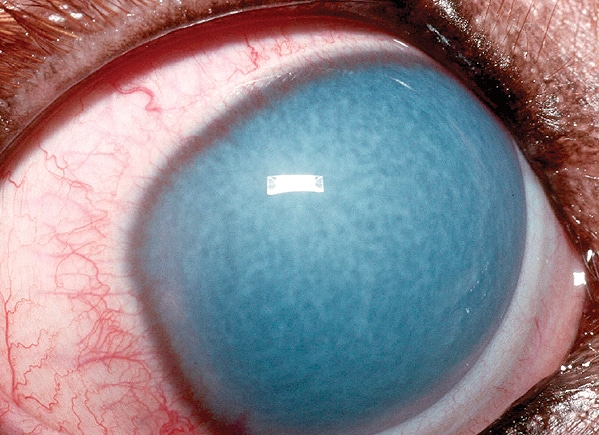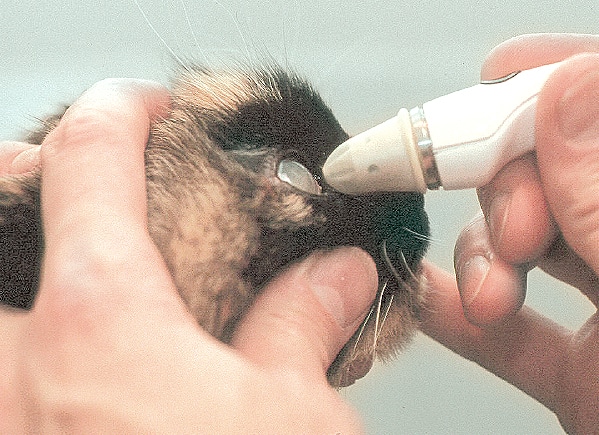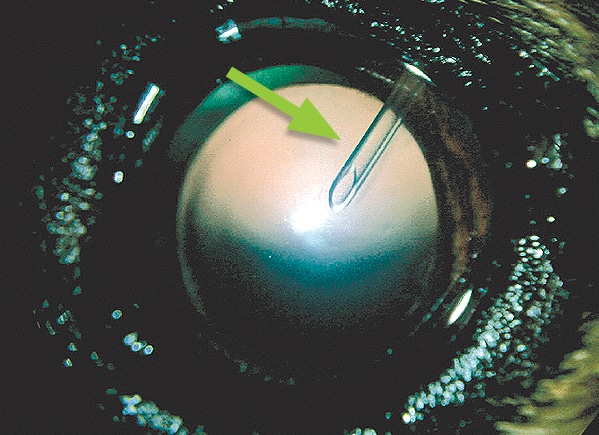
What is glaucoma?
Glaucoma is an increased pressure inside the eye, caused by an obstruction to the drainage of the fluid from within the eye. In order to keep the eye inflated, fluid is normally produced and cleared away from the eye all the time. The fluid inside the eye is not related to the tear fluid (which is on the surface of the eye).
The blockage of fluid drainage within the eye can be due to an inborn defect (primary glaucoma) or due to another eye disease that interferes with drainage of the fluid inside the eye (secondary glaucoma). Common causes of secondary glaucoma are inflammation inside the eye or a shift of the position of the lens within the eye.
Is my dog at risk?
Many cases of primary glaucoma are inherited and due to an abnormally formed drainage passage within the eye. Affected breeds include the Basset Hound, Welsh Springer Spaniel, Cocker Spaniel, Siberian Husky, Great Dane, the Flat Coated Retriever and many others. Often one eye is affected initially but there is a high risk that the other eye will follow at some point in the future.
A test (gonioscopy) is available to determine the predisposition of your dog to develop glaucoma. In this test, a special contact lens is applied to the eye to allow assessment of the structure concerned with drainage of fluid from the inside of the eye.
What are the signs of glaucoma?
In most cases, the disease develops very rapidly. The patient is often depressed and reluctant to exercise. The eye becomes blind and appears red, painful and sore with a bluish tinge over the cornea. Less commonly, the pressure increase is slow and the clinical signs are not as pronounced. However, a gradual reduction in vision is often noticed.

Severe water-logging of the window of the eye (cornea)resulting in a cloudy appearance
How is glaucoma diagnosed?
A special instrument called a tonometer is used to measure the pressure inside the eye. Local anaesthetic is applied to the eye for this test which is usually very well tolerated.

Eye pressure measurement in a cat
Is treatment possible?
The aim of treatment in glaucoma is to preserve vision and to relieve the pain caused by the pressure increase. In order to reduce the pressure within the eye, drugs are given to reduce fluid production within the eye and to improve removal of fluid from the eye. In some cases of secondary glaucoma (see previously mentioned), treatment of the underlying cause, such as anti-inflammatory medication or removal of a dislocated lens, can lead to the pressure decreasing.
Patients with primary glaucoma are more difficult to treat and it is important to realise that no cure for the disease exists. In some patients, pressure control can be achieved with medical treatment only. However, with time, most patients becomes less responsive to the treatment and surgical alternatives may have to be considered. These include laser therapy or the surgical placement of a drainage implant into the affected eye (see picture above). Regular check ups will also be necessary to re-assess the second eye and check its pressure.

Glaucomatous eye with implanted tube (marked with an arrow). The pressure in this eye is controlled
Is preventative treatment available for the second eye?
No preventative treatment is available that can totally stop glaucoma developing in the second eye. However, there is evidence that with the help of medication, the onset of the condition in the second eye may be delayed.
What happens if the pressure cannot be controlled?
Eyes that have lost vision but continue to have an increased pressure are a cause of chronic pain for the patient. Removal of the eye must be considered in such cases to ensure the welfare and comfort of the patient. Occasionally, both eyes may unfortunately be lost. Should this be the case, most dogs will adapt very well to being blind and continue to lead a good quality life. (See Enucleation information page)
If you have any queries or concerns, please do not hesitate to contact us.
Arranging a referral for your pet
If you would like to refer your pet to see one of our Specialists please visit our Arranging a Referral page.